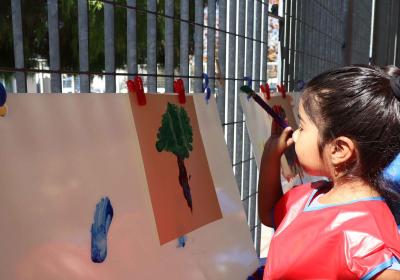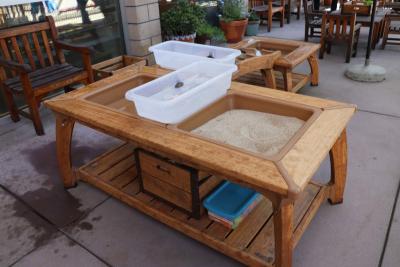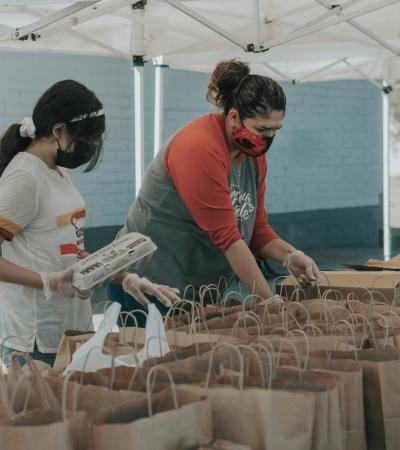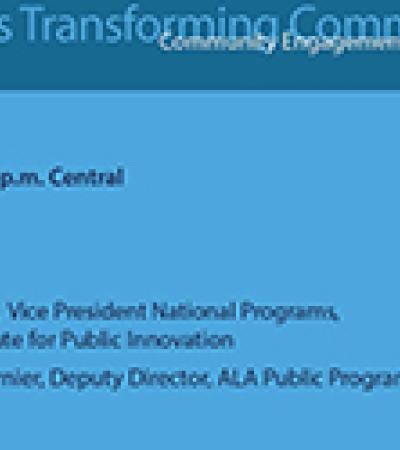San José, Calif., is home to a large Spanish-speaking population, and of course it is extremely important to the San José Public Library to meet those patrons’ needs. How could the library make sure they were providing the services that Spanish speakers needed?
They may seem like straightforward questions: What does our community wish to achieve, and how can the library help? But asking these questions requires library staff to look beyond the library walls, to talk to community members, and to make meaningful connections. For many libraries, this requires a change in perspective.

In 2014, San José Public Library began working with The Harwood Institute for Public Innovation, a national nonprofit organization that helps people and organizations solve pressing problems and change how communities work together. In collaboration with Harwood Institute coaches, the library embarked on a process called Turning Outward, looking to the community when setting priorities.
Over the past four years, San José Public Library has seen tremendous shifts in the way its staff operates and the way the library is viewed by the community. Here, Jean Herriges, the library’s interim assistant director, and librarian Adilene Rogers share some of the recent impacts they have seen.
Programming Librarian: A major part of the Harwood Institute’s Turning Outward process is holding community conversations to learn what your community aspires to and to help them realize their goals. What did this process teach you?
Jean Herriges: Our community conversations helped us better understand and meet the needs of our Spanish-speaking customers. Library staff found that the Spanish-speaking community felt that the city, not the library, was not doing enough to offer Spanish resources and materials throughout the city. They felt that there were only certain areas where they could expect Spanish services. They especially complained about the lack of Spanish police officers, Spanish-speaking city staff and bilingual early literacy opportunities for their kids.
The library was already in the midst of making some significant changes, allocating a large amount of funds to help expand our Spanish collections. But as a result of what we learned, we decided to add even more branches to the scope of the project. We hoped that adding these new materials in libraries that had not been prioritized would help with some of the issues that were brought up during the conversation.
The conversations also impacted very concrete things in our branches. Participants in the conversations also stated that it wasn’t easy to find Spanish resources or materials, so library staff went out to the branches, making Spanish collections more visible by weeding, creating displays and better utilizing the space available. In some cases, this was easy, but for branches that originally had smaller Spanish collections, it involved some creative thinking, such as switching where the Spanish collection was located or weeding the English collection to make room.
PL: Was your library programming impacted by what you learned?
Adilene Rogers: Yes. We offered a bilingual story time training for our librarians, adding to the two libraries that already offered these programs. This helped increase the number of bilingual story times offered in the system. The Biblioteca Latinoamericana Branch also revamped the way they did their programming. While this branch had always offered bilingual programming, it was usually focused on early literacy or older adults. As a result of what we learned in the conversations, they decided to add more tween bilingual programs, such as a bilingual tween book club, camera classes and art workshops.

The biggest programming change that Biblioteca Latinoamericana made was adding an early literacy program that takes place outdoors. Many participants in the area lamented the fact that there were few outdoor spaces that they felt were safe and welcoming for their young child. In light of this information, we teamed up with local businesses and the San Jose Public Library’s Early Education unit to revamp our outdoor patio area to make it more children centric. We added a sand and water table, an open-ended art area and a bubble corner. The program is now one of our biggest draws and serves families from all over the area.
We have seen results already. The branch reports that their Spanish programs have been very successful, with lots of attendance and positive feedback. The Spanish collections are seeing higher use, and the library is receiving a lot of positive comments from customers, as well as the librarians at the branches, regarding the new additions. While the staff always asked for community feedback and took it into account for future programming, the library finds they now do a better job of paying attention to community needs and using what they learn on an ongoing basis.
PL: I would assume that the process of seeking community input in this way was new for many library staff. How did they feel about the changes?
Jean Herriges: Actually, the response from staff has been quite favorable. Library staff tell me that they like hearing about the issues within the community because it makes it easier for them to connect with customers. It feels like library staff and community members are truly on the same page now. Staff has become more vocal in bringing forth what they are hearing out in the community; suggestions from the community are sparking new ideas for programs and outreach opportunities.
The process has also been helpful with our volunteers. Before, library staff wouldn't really explain the impact of volunteering; we just assumed all the volunteers knew their work was making a difference. But now, during volunteer interviews the library can describe the community and their aspirations. We have a sense of ourselves as a part of something greater, and that comes through in the interviews. They feel this has helped them retain volunteers.
PL: What do you think the biggest change has been for San Jose Public Library since beginning to use the Harwood Institute’s approach?
Adilene Rogers: The library is definitely more in tune with the community now. The library used to show up at meetings, but now we are an active participant, and we’re seen as trustworthy. The library is seen as an advocate for the community’s needs. The district attorney has emerged as an ally, letting the library know when new meetings are happening and asking the library to spread the word, and the staff gladly does so. Community members are actively seeking out the library and requesting the library be present for special community meetings. That never used to happen.



